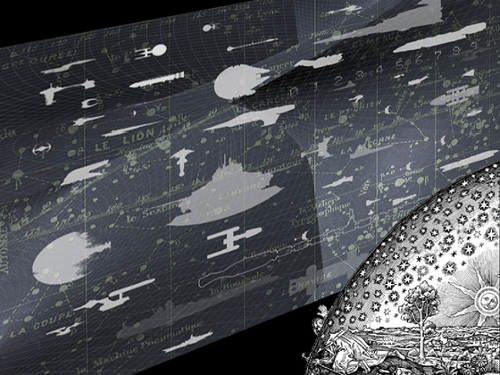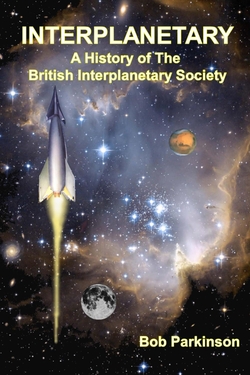Centauri Dreams
Imagining and Planning Interstellar Exploration
On to Houston
I’m on my way to Houston for the 100 Year Starship symposium, and I should be airborne before this clicks into visibility through the wonders of automation. I’m involved in meetings all day Thursday and then into regular symposium activities for the rest of the weekend, about which I’ll be reporting next week and to a certain extent from the site itself. Last year in Orlando I wound up sending out more tweets than blog posts from the actual venue and this year I’ve decided to more or less play it by ear, seeing what opportunities arise and how best to convey them.
If you’re following me on Twitter as @centauri_dreams, be advised that I don’t know how much I’ll be tweeting, but feel free to ‘unfollow’ me as needed if you start getting more than you bargained for. You can always sign back up again after the symposium. What I’ve learned over the years is that I’m not good at multitasking, and my priority has to be getting accurate notes from the various workshops and technical sessions I’ll be attending. I suspect most of what I have to say about the symposium will be written after I return next week, when I’ll have had the chance to go through my notes and will have an overview of events. Expect sporadic posts here and on Twitter until then.

The Psychology of Space Exploration: A Review
By Larry Klaes
A new book looking at the inner lives of astronauts is Larry Klaes’ subject today. Planning for long-term missions like a manned trip to Mars requires a great deal of work on closed systems, as we’ve recently discussed. But we also have to consider the psychological issues raised by confinement in a cramped environment for long durations, issues that are one thing in the confines of low-Earth orbit but perhaps another when far from the home world.
Early on the morning of February 5, 2007, several officers from the Orlando Police Department in Florida were summoned to the Orlando International Airport, where they arrested a female suspect. This woman was alleged to have attacked another woman she had been stalking while the latter sat in her car in the airport parking lot. Judging by the various items later found in the vehicle the suspect had used as transportation to the Sunshine State all the way from her home in Houston, Texas, her ultimate intent was to kidnap and possibly conduct even worse actions upon her victim.
While such a criminal incident is sadly not uncommon in modern society, what surprised and even shocked the public upon learning what happened was the occupation of the perpetrator: She was a veteran NASA astronaut, a flight engineer named Lisa Nowak who had flown on the Space Shuttle Discovery in July of 2006. As a member of the STS-121 mission, Nowak spent almost two weeks in Earth orbit aboard the International Space Station (ISS), performing among other duties the operation of the winged spacecraft’s robotic arm.
It seems that the woman who Nowak went after, a U.S. Air Force Captain named Colleen Shipman, was in a relationship with a male astronaut named William Oefelein. Nowak had also been romantically involved with Oefelein earlier, but he had gradually broken off their relationship and started a new one with Shipman. Oefelein would later state that he thought Nowak seemed fine about his ending their affair and moving on to another woman. However, by then it was painfully and very publicly obvious that Oefelein had not thoroughly consulted enough with his former companion on this matter.
NASA would eventually dismiss Nowak and Oefelein from their astronaut corps, the first American space explorers ever formally forced to leave the agency. NASA also created an official Code of Conduct for their employees in the wake of this publicity nightmare.
Now I have no documented proof of this, but I strongly suspect that the Nowak incident played a large but officially unacknowledged role in the creation of the recent offering by the NASA History Program Office book titled Psychology of Space Exploration: Contemporary Research in Historical Perspective (NASA SP-2011-4411), edited by Douglas A. Vakoch, a professor in the Department of Clinical Psychology at the California Institute for Integral Studies, as well as the director of Interstellar Message Composition at The SETI Institute.
Quoting from a NASA press release (11-223), which appeared about the same time as the book:
Psychology of Space Exploration is a collection of essays from leading space psychologists. They place their recent research in historical context by looking at changes in space missions and psychosocial science over the past 50 years. What makes up the “right stuff” for astronauts has changed as the early space race gave way to international cooperation.
The book itself is available online in several formats.
From the Right Stuff to All Kinds of Stuff
It may seem obvious to say that astronauts are as human as the rest of us, but in fact our culture has long viewed those who boldly go into the Final Frontier atop a controlled series of explosions otherwise known as a rocket in a much different and higher regard than most mere mortals. Even before the first person donned a silvery spacesuit and stepped inside a cramped and conical Mercury spacecraft mated to a former ICBM for a brief arcing flight over the Atlantic Ocean in 1961, NASA’s first group of human space explorers – known collectively as the Mercury Seven – were being presented from their very first press briefing in 1959 as virtual demigods who had the right skills and mental attitude to brave the unknown perils of the Universe.
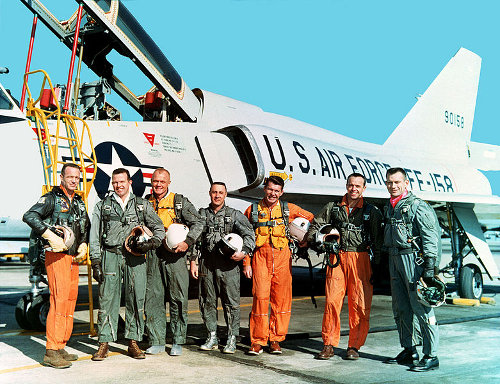
Image: The Mercury Seven stand in front of a F-106 Delta Dart. Credit: Wikimedia Commons.
The Mercury Seven astronauts were not just men: They were an elite breed of space warriors ready to conquer the Cosmos who also represented the best that the United States of America had to offer when it came to their citizens, their technology, and their science. The nation’s first space explorers may have been ultimately human and limited in various ways, even flawed, but the agency’s goal was to keep any issues in check through their missions at the least and preferably during their full tenure with NASA.
By the time of Nowak’s incident, astronauts may not have been the demigods of the days of Mercury, Gemini, and Apollo, but they were still looked upon as highly capable people who ventured to places few others have gone and who did not give into human passions beyond a few moments of wonder at the Universe, realistic or not. This is why Nowak and Oefelein’s behaviors were so shocking to the public even four decades after the first generations of space explorers.
There are two reasons why I brought up the dramatic events of 2007 with Lisa Nowak: The first is my aforementioned hypothesis that what took place between the former astronaut and her perceived romantic rival led to NASA feeling the need to examine their policies regarding the human beings they send into space and formally documenting the resulting studies.
The second reason is that Psychology of Space Exploration needed more of these personal stories about the astronauts and cosmonauts. Now certainly there were some of these throughout the book: The Introduction to Chapter 1 relays a tale about a test pilot who was applying to be an astronaut who told an evaluating psychiatrist about the time the experimental aircraft he was flying started spinning out of control. The pilot responded to this emergency by calmly leafing through the vehicle’s operating manual to solve the immediate problem, which he obviously did.
Nevertheless, more of these kinds of stories would have not only made the book a bit less dry as it was in places, but they would have added immeasurably to the information content of this work.
As just one example, in Chapter 2 on page 26, the author mentions (from another source) that the Soviet space missions “Soyuz 21 (1976), Soyuz T-14 (1985), and Soyuz TM-2 (1987) were shortened because of mood, performance, and interpersonal issues. Brian Harvey wrote that psychological factors contributed to the early evacuation of a Salyut 7 [space station] crew.”
The problem here is that the book then moves on without going into any details about exactly what happened to curtail these missions. Knowing what took place would certainly be useful in making sure that future space ventures, especially the really long duration ones that will be of necessity as we move past our Moon, could be the difference between a secure and functioning crew and a disaster.
Incidentally, the author noted that the Soviets, who were usually reticent about giving out many technical details or goals on most space missions manned and robotic, were more open when it came to the experiences of their cosmonauts and showed more interest in their physiological situations in confined microgravity situations than NASA often did with their astronauts.
The Soviet space program also had a longer period of actual experience with humans living aboard space stations starting in 1971 with Salyut 1 (or Soyuz 9 in 1970 if you want to count that early space endurance record-holding jaunt) which NASA did not share between their three Skylab missions in 1973-1974 until their joint involvement with the Soviet Mir station in the 1990s. Having the details from that era would be of obvious benefit and interest.
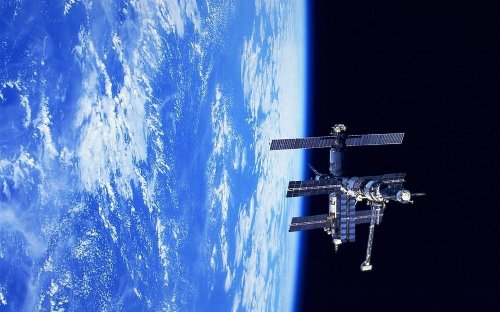
Image: The MIR station hovering over Earth. It deorbited in March 21, 2001.The station was serviced by the Soyuz spacecraft, Progress spacecraft and U.S. space shuttles, and was visited by astronauts and cosmonauts from 12 different nations. It endured 15 years in orbit, three times its planned lifetime. Credit: NASA.
Granted, as with a collection of research papers such as this, there are plenty of references. Finding the stories this way is not a problem if you are doing your own research and using Psychology of Space Exploration as a reference source, but for the more casual reader it could be a bit of a disappointment when these items are not readily available.
While I think most people who want to learn more about how our space explorers are affected by and respond to and during their missions into the Final Frontier will find something of interest and value throughout this book, Psychology of Space Exploration is largely a reference work that goes into levels of certain details as befitting literature of its type while missing a number of others which I think are just as important for a comprehensive view of human expansion into space, both in the past, the present, and most vitally the future.
The ultimate goal of putting people into space is eventually to create a permanent presence of our species beyond Earth. That is the grand aim even if their initial underlying purposes were more geared towards engineering and geopolitical goals. This is similar to the history of the early navigators who crossed the Atlantic Ocean from Europe to the New World, for they too had other plans initially in mind, although the ultimate result was the founding of the many nations that exist in the Western Hemisphere today.
To give some examples of what I feel is missing and limited in representation in Psychology of Space Exploration, there is but a brief mention of what author Frank White has labeled the “Overview Effect”. As the book states, this is the result of “truly transformative experiences [from flying in space] including sense of wonder and awe, unity with nature, transcendence, and universal brotherhood.”
Clearly this is a very positive reaction to being in space, one which could have quite helpful benefits for those who are exploring the Universe. The Overview Effect might also have an ironic down side, one where a working astronaut might become so caught up in the “wonder and awe” of the surrounding Cosmos away from Earth that he or she could miss a critical mission operation or even forget what they were originally meant to do. Mercury astronaut Scott Carpenter may have been one of the earliest “victims” of the Overview Effect during his Aurora 7 mission in 1962. Apparently his very human reaction to being immersed in the Final Frontier in part caused Carpenter to miss some key objectives during his mission in Earth orbit and even overshoot his landing zone by some 250 miles. Carpenter never flew in space again, despite being one of the top astronauts among the Mercury Seven. It would seem that in those early days of the Space Race, having the Right Stuff did not include getting caught up with the view outside one’s spacecraft window, at least so overtly.
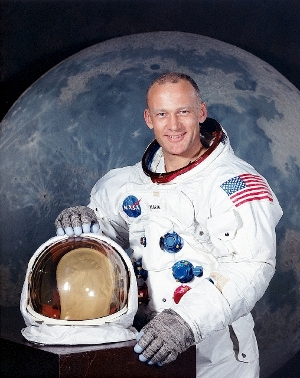
Another item largely missing from Psychology of Space Exploration is the effects on space personnel after they come home from a mission. Edwin “Buzz” Aldrin, who with Neil Armstrong became the first two humans to walk on the surface of the Moon with the Apollo 11 mission in 1969, is one of the earliest examples of publicly displaying the truly human side of being an astronaut.
Although not revealed publicly until 2001 by former NASA flight official Christopher C. Kraft, Jr., in his autobiography Flight: My Life in Mission Control, the real reason Aldrin was not selected to be the first one to step out of the Apollo Lunar Module Eagle onto the Moon was due to the space agency’s personal preference for Armstrong, who Kraft called “reticent, soft-spoken, and heroic.” Aldrin, on the other hand, “was overtly opinionated and ambitious, making it clear within NASA why he thought he should be first [to walk on the Moon].”
Image: Astronaut Buzz Aldrin. Credit: NASA.
Even though Aldrin was a fighter pilot during the Korean War, earned a doctorate in astronautics at the Massachusetts Institute of Technology (MIT), and played an important role in solving the EVA issues that had plagued most of the Gemini missions and was critical to the success of Apollo and beyond, his lack of following the unspoken code of the Right Stuff kept him from making that historic achievement.
Aldrin would later throw the accepted version of the Right Stuff for astronauts right out the proverbial window when he penned a very candid book titled Return to Earth (Random House, 1973). The first of two autobiographies, the book revealed personal details as had no space explorer before and few since, including the severe depression and alcoholism Aldrin went through after the Apollo 11 mission and his departure from NASA altogether several years later, never to reach the literal heights he accomplished in 1969 or even to fly in space again. Although Aldrin would later recover and become a major advocate of space exploration, he is not even given a mention in Psychology of Space Exploration. In light of what later happened with Nowak and several other astronauts in their post-career lives, I think this is a serious omission from a book that is all about the mental states of space explorers.
The other glaring omission from this work is any discussion of the human reproductive process in space. NASA has been especially squeamish about this particular behavior in the Final Frontier. There is no official report from any space agency with a manned program on the various aspects of reproduction among any of its space explorers, only some rumors and anecdotes of questionable authenticity.
As with so much else regarding the early days of the Space Age, that may not have been an issue with the relatively few (primarily male) astronauts and cosmonauts confined to cramped spacecraft for a matter of days and weeks, but this will certainly change once we have truly long duration missions, space tourism, and non-professionals living permanently off Earth. As with daily life on this planet, there will be situations and issues long before and after the one aspect of human reproduction that is so often focused upon. Unfortunately, outside of some experiments with lower animals, real data on this activity vital to a permanent human presence in the Sol system and beyond is absent.
I recognize that Psychology of Space Exploration is largely a historical perspective on human behavior and interaction in space. As there have been no human births yet in either microgravity conditions or on another world and the other behaviors associated with reproduction are publicly unknown, this work cannot really be faulted for lacking any serious information on the subject. What this does display, however, is how far behind NASA and all other space agencies are in an area which will likely be the determining factor in whether humans expand into the Cosmos or remain confined to Earth.
So Far Along, So Far to Go
What the Psychology of Space Exploration ultimately demonstrates is that despite real and important improvements in how astronauts deal with being in space and the way NASA views and treats them since the days of Project Mercury, we are not fully ready for a manned scientific expedition to Mars, let alone colonizing other worlds.
Staying in low Earth orbit for six months at a stint aboard the ISS as a standard space mission these days gives an incomplete picture of what those who will be spending several years traveling to and from the Red Planet across many millions of miles of space will have to endure and experience. If an emergency arises that requires more than what the mission crew can handle, Earth will likely be a distant blue star for them rather than the friendly globe occupying most of their view which all but the Apollo astronauts have experienced since 1961.

Regarding this view of the shrinking Earth from deep space, the multiple authors of Chapter 4 noted that ISS astronauts took 84.5 percent of the photographs during the mission inspired by their motivation and choices. Most of these images were of our planet moving over 200 miles below their feet. The authors noted how much of an emotional uplift it was for the astronauts to image Earth in their own time and in their own way.
The chapter authors also had this to say about what an expedition to Mars might encounter:
As we begin to plan for interplanetary missions, it is important to consider what types of activities could be substituted. Perhaps the crewmembers best suited to a Mars transit are those individuals who can get a boost to psychological well-being from scientific observations and astronomical imaging. Replacements for the challenge of mastering 800-millimeter photography could also be identified. As humans head beyond low-Earth orbit, crewmembers looking at Earth will only see a pale-blue dot, and then, someday in the far future, they will be too far away to view Earth at all.
Image: Jerrie Cobb poses next to a Mercury spaceship capsule. Although she never flew in space, Cobb, along with twenty-four other women, underwent physical tests similar to those taken by the Mercury astronauts with the belief that she might become an astronaut trainee. All the women who participated in the program, known as First Lady Astronaut Trainees, were skilled pilots. Dr. Randy Lovelace, a NASA scientist who had conducted the official Mercury program physicals, administered the tests at his private clinic without official NASA sanction. Cobb passed all the training exercises, ranking in the top 2% of all astronaut candidates of both genders. Credit: NASA.
Now of course we could prepare and send a crewed spaceship to Mars and back with a fair guarantee of success, both in terms of collecting scientific information on that planet and in the survival of the human explorers, starting today if we so chose to follow that path. The issue, though, is whether we would have a mission of high or low quality (or outright disaster) and if the results of that initial effort of human extension to an alien world would translate into our species moving beyond Earth indefinitely to make the rest of the Cosmos a true home.
The data recorded throughout Psychology of Space Exploration clearly indicate that despite over five decades of direct human expeditions by many hundreds of people, we need much more than just six months to one year at most in a collection of confined spaces repeatedly circling Earth. This will affect not only our journeys and colonization efforts throughout the Sol system but certainly should we go with the concept of a Worldship and its multigenerational crew as a means for our descendants to voyage to other suns and their planets.
This book is an excellent reflection of NASA in its current state and human space exploration in general. As with the agency’s manned space program since the days when the Mercury Seven were first introduced to the world in 1959, we have indeed come a long way in terms of direct space experience, mission durations, gender and ethnic diversity, and understanding and admitting the physiological needs of those men and women who are brave and capable enough to deliberately venture into a realm they and their ancestors did not evolve in and which could destroy them in mere seconds.
Having said all this, what I hope is apparent is that we now need a new book – perhaps one written outside the confines of NASA – which will address in rigorous detail the missing issues I have brought to light in this piece. This request and the subsequent next steps in our species’ expansion into space – which will also eventually take place beyond the organizational borders of NASA – cannot but help to improve our chances of becoming a truly enduring and universal society in a Cosmos where certainty and safety are eventually not guaranteed to beings who remain confined physically and mentally to but one world.

Crowdsourcing Breakthrough Propulsion Ideas
Making Progress on Star Trek Physics is Marc Millis’ foray into crowdsourcing, a just announced project on Kickstarter. For those new to the concept, Kickstarter allows the general public to make donations to projects that are described on the site. A deadline is established and so is a minimum funding goal — if the goal is not reached by the deadline, no funds are collected. $275 million have been raised for various Kickstarter projects thus far and Millis is hoping to catch this wave in support of a new book on breakthrough propulsion concepts that is aimed at a broad, general audience.
Centauri Dreams readers will recall that Millis and Eric Davis co-edited 2009’s Frontiers of Propulsion Science, published by the AIAA. The first compilation on topics Millis analyzed as head of NASA’s Breakthrough Propulsion Physics project, Frontiers was lengthy (22 individual essays in 739 pages) and written specifically with a graduate-level and professional audience in mind. The new project does something equally unusual, explaining recent research on these matters from the ground up, supported by the diagrams and artwork of the graphic designer Alexandre Szames.
From Millis’ description on the Kickstarter page:
Contrary to popular belief, NASA and other organizations do NOT routinely fund such far-future work, since this research appears to be beyond foreseeable returns on investment. Another impediment is that potential sponsors find it difficult to tell the difference between those crazy ideas that might become breakthroughs and the more numerous, genuinely crazy ideas.
The funds will be used to write enough material to secure a publishing deal and to assist some of my fellow practitioners to deliver fresh content and produce new graphics. I need to know by mid-late September if I’ll have the resources to do this. At that time, I will have to choose between various options for my future. My top wish is to do this book as my next step.
Let’s see how crowdsourcing works for this kind of project — small contributions can add up fast when seeded on the Internet. In addition to Millis’ book concept, the idea is being explored by a number of space-minded organizations, as Alan Boyle points out in a recent Cosmic Log article. Michael Laine’s LiftPort Group, for example, has been using Kickstarter to raise funds for work on space elevator technologies. SkyCube is an attempt to launch a CubeSat on a SpaceX booster, as is the crowd-sourced ArduSat. Let’s hope this smaller fundraiser on BPP ideas can be equally effective.

100 Year Starship Symposium Next Week
The 100 Year Starship 2012 Public Symposium begins next week, with the recently announced news that former president Bill Clinton will serve as honorary chair for the event. I’m not sure whether a US president has ever spoken about starships before, but what Clinton said was this: “This important effort helps advance the knowledge and technologies required to explore space, all while generating the necessary tools that enhance our quality of life on earth.” The symposium takes a decidedly multi-disciplinary theme, with speakers on topics ranging from engineering to ethics, philosophy, the social sciences and biology.
Our recent discussions about experimenting with self-enclosed ecosystems flow naturally into the upcoming event in light of the range of topics to be covered. In addition to the speakers and scientific papers, four workshops have been announced. Let me pull some excerpts on the workshops directly off the 100 Year Starship page:
Workshop 1: Research Priorities for the First Ten of 100 Years
The capabilities required to successfully mount a human interstellar mission are numerous and daunting. Yet, we must start somewhere. Requirements range from achieving relativistic (approaching light speed) velocities and navigation, radiation shielding, robust crew and passenger health, training, dynamics, optimized skill mix, culture and compatibility, to selecting destinations, self-renewing machine and life support systems, and financial investment.
Workshop 2: Path to the Stars—Evolutionary or Revolutionary
Is the best approach to reaching the stars a giant leap or incremental baby steps? Is there a real and necessary requirement to colonize our solar system before attempting to travel to another star? Is a one-way trip ethical? Is it possible to achieve such an audacious goal as interstellar flight with a “slow and steady wins the race” strategy or does that method risk stagnation?
Workshop 3: The Mission: Human, Robotic or Reconstituted?
Some argue that taking humans along not only complicates the mission and equipment, but may also make an interstellar mission anytime in the foreseeable future extremely improbable.
Workshop 4: Is It Everybody’s Space Mission?
Who should and can participate in the quest for human interstellar space travel? How should that participation be facilitated, encouraged and measured? Should those who have technical backgrounds or declared “interstellar first” have the front row seats? Is this the purview of certain countries, socioeconomic groups or cultures?
Attendees can register to participate in workshops on the website.
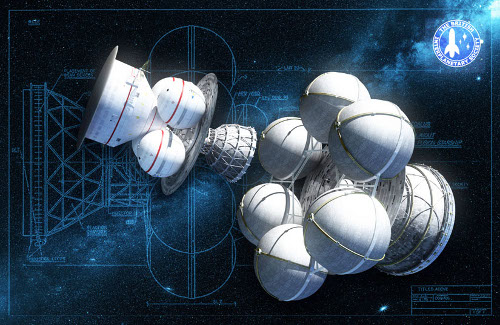
Image: The Project Daedalus design, the first fully developed study of an interstellar craft, created by the British Interplanetary Society in the 1970s. Icarus Interstellar, a partner in the 100 Year Starship effort, is developing Project Icarus as the successor to Daedalus. The ongoing design study will doubtless be much in the air in Houston. Credit: Adrian Mann.
Among the speakers at the symposium will be, in addition to symposium chair Mae Jemison, anthropologist Johnetta B. Cole, director of the Smithsonian’s National Museum of African Art, space journalist Miles O’Brien, SETI Institute co-founder Jill Tarter, and two figures well known to Star Trek fans: Nichelle Nichols (Lt. Uhura from the first Star Trek series), and LeVar Burton, who played Geordi La Forge in Star Trek: The Next Generation. Although I’ll mostly be there for the scientific papers, it will be fun to see what the dose of popular entertainment lore can bring to the proceedings. Track chairs include Eric Davis (Institute for Advanced Studies-Austin ), Amy Millman (Springboard Enterprises), David Alexander (Rice University) and Ian O’Neill (Discovery News).
For those of you coming in late on all this, the 100 Year Starship effort grows out of seed money provided by the Defense Advanced Research Projects Agency (DARPA). Last year’s conference in Orlando took place a few months before the award was allocated to The Dorothy Jemison Foundation for Excellence, named in honor of astronaut Mae Jemison’s mother. The winning proposal was crafted by Jemison’s team in partnership with Icarus Interstellar, which continues to explore research and development dedicated to interstellar hardware, and the Foundation for Enterprise Development. From a recent news release from 100YSS:
In its first year, 100YSS will seek investors, establish membership opportunities, encourage public participation in research projects and develop the vision for interstellar exploration. 100 Year Starship will bring in experts from myriad fields to help achieve its goal – utilizing not only scientists, engineers, doctors, technologists, researchers, sociologists and computer experts, but also architects, writers, artists, entertainers and leaders in government, business, economics, ethics and public policy. 100YSS will also collaborate with existing space exploration and advocacy efforts from both private enterprise and the government. In addition, 100YSS will establish a scientific research institute, The Way, whose major emphasis will be speculative, long-term science and technology.
The Houston event will run September 13-16, 2012 at the Hyatt Regency with details available on the 100 Year Starship site. Having handed off initial funding to the new organization, DARPA has stepped back to let the 100 Year Starship grow on its own. Thus Houston marks the first major event 100YSS has undertaken, and I’m hoping the sessions will have much of the same multi-disciplinary sparkle that enlivened Orlando one year ago.

Space Imperative: Building Closed Ecologies
Long journeys by spaceship are a staple of science fiction, but we know all too little about how to sustain a human habitat in a hostile environment. Experiments in closed ecosystems simply reveal how much work will have to go toward this subject before we can talk about moving out into the Solar System, much less sending missions outside of it. One experiment in this direction was Bios-3, conducted at the Institute of Biophysics in the Russian city of Krasnoyarsk. John Allen, himself deeply involved with the later Biosphere 2 project, called Bios-3 “something of a clandestine legend to the handful of people actually working on closed life systems.”
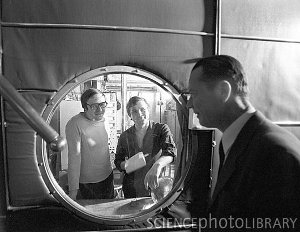
The thought behind Bios-3, which was completed in 1972, was to develop closed ecosystems that could support a crew of up to three in a 315 cubic meter space that would be divided into four areas, one designated for the crew, the others for growing food sources, with xenon lamps acting as the light source and power supplied by a nearby hydroelectric power station. Ten manned experiments, the longest involving a three man crew enclosed for 180 days, took place, with the facilities being used for testing until the mid-1980s. Work on self-contained environments continues at the larger International Center for Closed Ecosystems, which incorporated Bios-3 in 1991 and now works cooperatively with the European Space Agency.
Image: BIOS-3 experiment. Historical image of scientists in the Russian BIOS-3 station during a closed ecosystem experiment, while one of the experiment leaders, Vladimir Okladnikov, observes from the outside. The BIOS-3 facilities consisted of a 315-cubic-metre sealed habitat and were used to conduct manned experiments – the longest lasting 180 days (1972-1973). Chlorella algae were used to recycle the air breathed by the human inhabitants and two chambers were used to grow wheat and vegetables. Photographed on 30th January 1985. Credit: RIA NOVOSTI/Science Photo Library.
Some good news clearly emerged from Bios-3, though mixed with reminders of how far we have to go. The experiments used chlorella algae to recycle air, cultivating the chlorella under artificial light. It was found that 8 square meters of exposed chlorella were needed per person to create the right balance of oxygen and carbon dioxide, and even so, a thermo-catalytic filter had to be used to maintain it. Bios-3 leader Josef Gitelson commented on the results:
“Crew who stayed inside the complex for six months, did not manifest any signs of deterioration to their health, including no harmful effects to the microflora of their skin and mucous membranes, nor the contractions of any allergies from contact with the plants. Tests also reveal that the air, water and vegetable parts of the food did not lose their qualities while inside the complex.”
All of which is good news, but bear in mind that Bios-3 was not a truly isolated environment, bringing in some of its food from the outside and drawing energy from a separate source. The later Biosphere 2 experiment in Arizona was larger, including its own rainforest, ‘ocean’ and desert along with its agricultural areas and living space. Biosphere 2 involved two sealed missions, one running from 1991 to 1993, the other for six months in 1994. Problems included declining oxygen levels and fluctuating levels of carbon dioxide, with difficulties in controlling the internal temperature. At the same time, the crew of eight in the 1991 experiment, after almost two years inside, experienced a range of psychological as well as physical problems.
You can see the disconnect between many of the things we want to do in space and the unsettling questions raised by these attempts at closed ecosystems. In a recent article, futurist George Dvorsky noted that NASA’s “Roadmap to Settlement” study, completed in 2000, described future lunar habitats constructed beneath the Moon’s surface, with plans for solar panels, a nuclear power plant, and a variety of methods for extracting carbon, silicon and aluminum from the surface. The confirmation of water on the Moon — some 600 million tons worth at the Moon’s north pole — adds to the interest in creating a human presence there.
But we can’t do all this, or press on to Mars and beyond, without learning how to develop a functional biosphere that will be sustainable over a period of years. That puts the spotlight on renewing efforts like Bios-3 and Biosphere 2 with the same vigor we apply to future space missions. The fact that neither of the two major biosphere projects succeeded at creating a truly closed ecological system should be an incentive for pressing on with future experiments. Dvorsky notes that at the top of the list should be carbon dioxide management, maintenance of stable temperatures, avoidance of water acidification and an eye toward psychological issues.
Get some of these questions resolved and we can push further experiments in space, eventually leading to truly complex environments that could serve us well in the long term. Says Dvorsky:
Initially, these self-sufficient space stations should be kept simple — pilot projects to prove that humans can live off-planet and independent of Earth — an important precedent for any subsequent missions to space, or for colonization efforts to other terrestrial bodies.
And indeed, as time passes, these projects will have to assess the viability of more complex and long-term missions. As Ben Austen has warned, we could run into problems such as inbreeding. His solution, however, is to stock our habitats with DNA to expand upon the existing gene pool. More radically, colonists could take advantage of cybernetics, advanced genetic engineering practices, and life extension technologies to overcome these issues as they arise.
Dvorsky thinks testing closed ecological systems on the Moon is the logical forerunner to a permanent Mars presence, one that could pave the way for missions much deeper into the Solar System. Whatever the early roadmap is, self-sustainability becomes vital when we’re talking about environments too distant for ready re-supply from Earth. Just how close did we come with Bios-3 and Biosphere 2 in solving the closed system riddle? We won’t know until we get back into the game with similar experiments in preparation for self-reliant orbital habitats later in the century. We’ll also learn a lot more about preserving the biosphere we have here at home.

Image: The ultimate in closed habitats. This is a painting by Don Davis based on the giant ‘Model 3’ cylindrical habitats envisioned by Gerard O’Neill. Here Davis imagines the clouds forming at an ‘altitude’ around the rotation axis. As the artist says, “At this time the scene is bathed in the ruddy light of all the sunrises and sunsets on Earth at that moment as the colony briefly enters the Earths shadow, out at the L5 Lagrangian point where stable locations are easily maintained.” The complexity of such a creation dwarfs our early experiments and reminds us how much we have to learn about closed ecosystems. Credit: Don Davis.
Dvorsky mentions a Ben Austen article above, one that appeared in Popular Science back in 2011. Let me close with a quote from that piece that illustrates a vision of self-enclosed ecosystems fitting into the broader scheme of deep space exploration:
Designing closed-loop sustainable habitats could help us feed our poor; advanced propulsion methods might revolutionize Earth-bound transportation; space solar energy could radically reduce our dependence on fossil fuels; and a deeper understanding of asteroids might provide us with valuable resources and someday allow us to alter the orbit of one headed our way. Colonizing space “isn’t just about survival, it’s about thriving,” says Tau Zero’s Marc Millis, adding that there are still adventures out there to be had, that one could do valiant work for the common good. For Millis, the driving questions are simple: “What can we do that makes for an exciting future to live in? Something where when you wake up in the morning you’re glad to be alive and a human?”

Robotics: Pushing the Envelope
“My increasingly sophisticated laptops are starting to develop personalities of their own,” says Charles Lineweaver (Australian National University), as interviewed by Peter Spinks in The Age. It’s a whimsical remark in the context of a discussion on robotics in space missions, but I think many of us can relate to it. We all tend to anthropomorphize at the drop of a hat, reading motives and reactions into the routine habits of our pets that may say more about us than about them. Maybe making things seem human is an essential part of what being human is.
It’s worth thinking about all this given the successes as well as the limitations of robotic technologies. I’m all in favor of both robotics and a robust manned program, but right now deep space is a machine’s game, and budget realities tell me it will remain so for the foreseeable future. That being the case, and again, with our tendency to anthropomorphize our machinery, there was a certain frisson associated with Curiosity’s breathtaking arrival on Mars. Controllers could only watch, given the distances involved, as sophisticated machinery put its survival on the line, and the joy at JPL after touchdown pegged Curiosity as, in its own way, one of us.
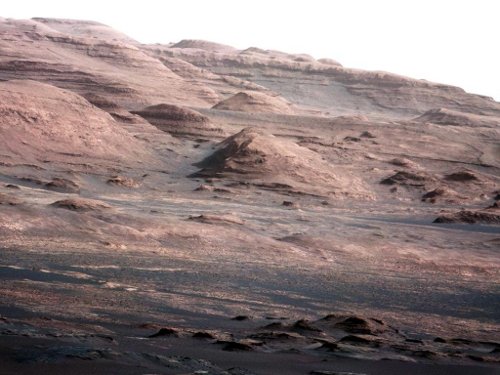
Image: Curiosity’s view of the base of Mt. Sharp. How long will it be before human crews work in this kind of environment? Credit: NASA/JPL.
Because both humans and robot craft have a place in space exploration, working out which does what best is important when the target is a relatively close Mars. On that score, the strengths of Curiosity and future robotic explorers are clear enough. It’s hard to call a $2.5 billion rover expendable unless you’ve first gotten every bit of data return you can from it, but we can still take chances with rovers we wouldn’t dare run with humans, and there’s no built-in return imperative either. The lack of life support allows us to maximize payload, and even a hostile environment like Mars has proven surprisingly workable for several generations of rovers.
Even so, Spinks’ article quotes Jon Clarke (Geoscience Australia) on why humans are very much in the game:
“Unmanned spacecraft and planetary rovers are very useful, and are superior to direct human presence for several tasks, such as for orbital imagery or acting as ground stations,” Dr Clarke explains. “But as the complexity of a mission increases, the difficulty of achieving it with an unmanned system goes up exponentially.”
Scientific exploration of planetary surfaces is one of the most difficult tasks imaginable, he says. “While specific tasks can be automated, the integrated replacement of the entire human being is very difficult, and perhaps impossible.”
I’ve written before about Ian Crawford’s views on robotics. Crawford (Birkbeck College, London) points to the decision-making capabilities of human beings on the surface of the Moon, where we explored six different sites and returned 382 kilograms of lunar material. Yes, we can envision a Mars sample-return mission, or similar returns from exotic places like Enceladus, but the sheer diversity of the Apollo samples is impossible to top robotically, at least at today’s level of development. Over 2000 lunar locations were sampled in the course of Apollo’s work.
In a recent paper on the subject, Crawford points to the robotic sample return missions and contrasts them with Apollo in terms of scientific papers generated:
…a large part of the reason why Apollo has resulted in many more publications than the Luna missions is due to the much larger quantity and diversity of the returned samples which, as we have seen, will always be greater in the context of human missions. The third point to note is that, despite being based on data obtained and samples collected over 40 years ago, and unlike the Luna, Lunokhod, or Surveyor publications, which have clearly levelled off, the Apollo publication rate is still rising. Indeed, it is actually rising as fast as, or faster than, the publications rate derived from the Mars Exploration Rovers, despite the fact that data derived from the latter are much more recent. No matter how far one extrapolates into the future, it is clear that the volume of scientific activity generated by the MERs, or other robotic exploration missions, will never approach that due to Apollo.
All this from a total of only 12.5 days on the lunar surface (and that figure includes down-time in the Lunar Module — the cumulative EVA time was a fleeting 3.4 days). Even Steve Squyres, principal investigator for the wildly successful Spirit and Opportunity rovers, is on record as saying “The unfortunate truth is that most things our rovers can do in a perfect sol [Martian day] a human explorer could do in less than a minute.” A human future in space seems inevitable for maximum science return, but clearly the machines go first.
Whether the humans follow at all may be a function of distance. While I feel sanguine about getting human crews to many Solar System targets eventually, it’s a real question whether moving beyond the Solar System will ever involve biological beings, an issue we looked at yesterday in the context of David Brin’s novel Existence. I’m convinced that robotic missions with sophisticated artificial intelligence will someday be launched to nearby stars, and we can hope that the kinds of advances we’ve seen in computing in our lifetimes will continue into generations of extraordinarily capable robot craft that can mimic human capabilities.
That’s asking a lot of robotics, but we get better at this with every successful mission. The problem of biology, though, ramps up the harder we choose to push it. Putting humans into deep space inevitably invokes the problem of self-contained habitats, about which we have so much to learn that even a manned flight to nearby Mars challenges our capabilities. While we work out these issues, robotic exploration proceeds without need of biological life support and capable of ever more sophisticated operations. There is no winner or loser in this game, for we can create the tools to send us data about environments to which we can’t yet travel, all the while developing the technologies that could make a sustainable human presence in space a reality.
Ian Crawford’s paper is “Dispelling the myth of robotic efficiency: why human space exploration will tell us more about the Solar System than will robotic exploration alone,” Astronomy and Geophysics Vol. 53 (2012), pp. 2.22-2.26 (abstract).


